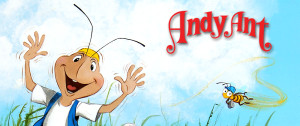
Story Writing Hints
By
Gerald D. O’Nan
Author of the
Adventures of Andy Ant Books
(Note: I will try to give you hints and ideas about writing stories using the 8 books in The Adventures of Andy Ant as examples. Having a set of the Andy Ant books available will help you understand the context better, but it isn’t necessary if you have a good imagination.)
Define the Characters with “Good Guys” and “Bad Guys”
The characters in your story are the elements that make the story seem real even if it is pure fantasy. And the characters can always make the story exciting. In that regard, your characters need to be “good guys” and some need to be “not-so-good guys.” In other words, the story needs to have conflict between some of the characters.
Since you have already created a character sketch – even if it is mental rather than in writing – you have a starting point in how your characters think. You have an understanding of what makes your character have emotions like fear, love, or excitement. Have an understanding of what makes your character experience those emotions. For example, your character might love dogs or have a fear of dogs. These emotions also help you develop the conflict between the characters in the story.
The more conflict you have in the story the more excitement you can create. In a chapter book, you can control the tempo of the story by how much conflict you create between the characters. But, whether you are writing a series like The Adventures of Andy Ant, a chapter book, or just a single story, it is very important to have a hero in the story and you must have someone who creates conflict, a bad guy – or at least someone who is not as good as he should be.
In the Adventures of Andy Ant series, Andy is always the hero/the good guy and Joey is the center of the conflict. The hero/good guy needs to win or be successful and resolve the conflict. In these stories, Joey wouldn’t be considered a “bad guy,” but he is always at the center of the conflict. Joey usually has the opportunity to share the “hero stage” with Andy, once he acknowledges his shortcomings. Like most of us, Joey has a never-ending list of shortcomings. Remember, when I wrote the Andy Ant stories, I was actually Joey with a never-ending list of shortcomings.
If you read The Band Music Mystery story, Joey teams up with another character to create the conflict. This other character has a reputation for being a bad guy and causes Joey to “shake in his boots” when Joey realizes how his actions/inactions may have impacted the other bad guy. And even though Andy has momentarily disappeared in that story, he remains the hero with his philosophical, contemplative thoughts.
Copyright © 2023 by Gerald D. O’Nan All Rights Reserved. No part of this document may be used or reproduced by any means, graphic, electronic, or mechanical, including photocopying, recording, taping, or by any information storage retrieval system without the expressed written permission of the author except in the case of brief quotations embodied in critical articles and reviews.



